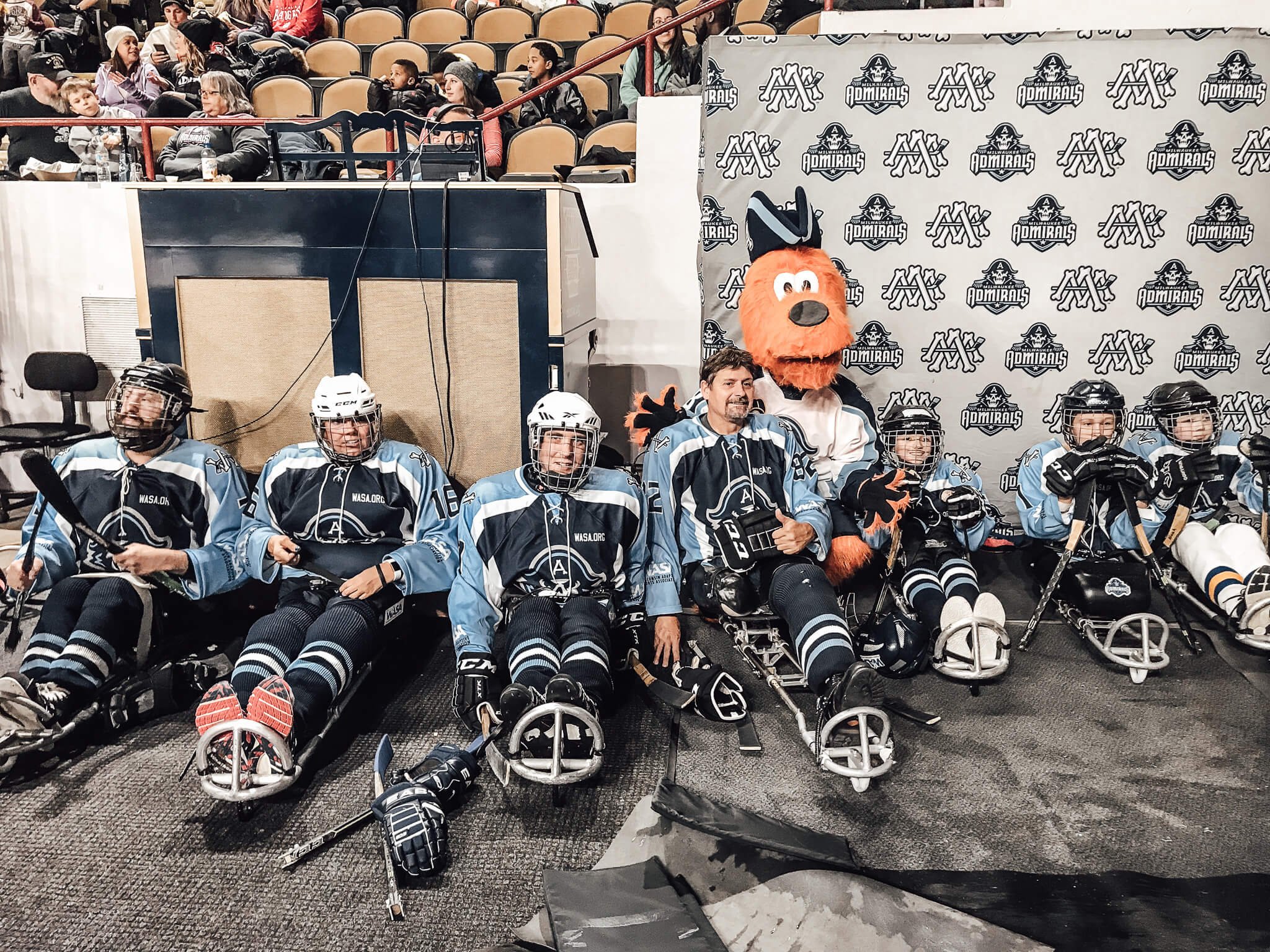
Get in the Game
Wisoconsin Sled Hockey
Power on Ice
Sled hockey is a sit-down version of ice hockey for players whose disability prevents them from playing stand-up hockey. The difference is equipment. Sled hockey players use sleds that are usually made of light-gauge aluminum, consisting of a customized bucket to sit in.
A frame supports the bucket, legs and feet, and is mounted on two skate blades attached under the bucket. Straps keep the player secure in the sled. Instead of one hockey stick, players use two for propulsion, passing and shooting.
Upcoming Hockey Events:
Sled Hockey FAQs
-
Both! They mean the same thing. Typically in the United States it is called Sled Hockey. Canada and some other countries call it Sledge Hockey. It's the same game with the same rules.
-
Sled Hockey is open to individuals with physical disabilities that prevent them from playing traditional stand-up hockey. This includes people with lower limb amputations, spinal cord injuries, and other mobility impairments. Players are classified based on their functional ability to ensure fair and balanced competition.
WASA offers recreational and competitive programs for kids and adults. -
Essential equipment for Sled Hockey includes a specially designed sled, two sticks with metal picks, a helmet with a face cage, shoulder pads, elbow pads, shin guards, gloves, and appropriate clothing to keep warm. The sled has a seat mounted on a frame with two hockey blades underneath and straps to secure the player.
-
Sled Hockey follows the basic rules of traditional ice hockey, with some adaptations. Players must use their sticks to propel themselves and handle the puck. Checking is allowed, but certain safety modifications are in place. Penalties, face-offs, and other standard hockey procedures apply. The game consists of three 15-minute periods.
-
Yes, Sled Hockey is played at various competitive levels, from local recreational leagues to international competitions. The sport is included in the Paralympic Games, and many countries have national teams that compete in world championships. There are also regional and national leagues that provide competitive opportunities for players of all skill levels.
Have other questions or want to get involved?
We’d love to talk! Contact jeromie@wasa.org to learn more.



